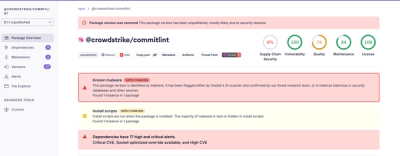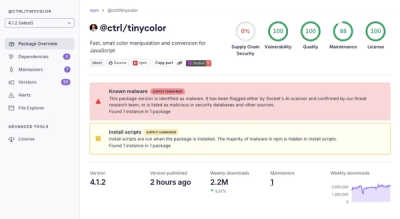Sciborg
Old name: RLFramework
Reinforcement Learning Framework
Disclaimer
This project is still a work in progress.
Everything here should work, but expect a high frequency of modifications and "improvements" over time.
TODOs (in this order)
- Add a basic RL minimal example on cartpole (similar to the one in goal-conditioned RL).
- Create a wiki, because this readme is becoming messy ... It should be precise enough to be used as a documentation.
- clean-up environments code (should not change their behaviour)
- Create new agents:
- DIAYN: an agent that wrap an value-based RL agent and make it learn skills
- A model-based agent (probably MuZero if I succeed ...)
- ICM (intrinsic curiosity module)
- Propose a new usage with a
rlf bash command.
The current easier usage, is to fork or download this repository, which force you to clone/download every
agent, environment, or experiment in this repository.
It is not a big deal now but it can become one in the future as new agents and elements are added.
The command will have a simple structure:
rlf init <project_name>: create a repository named <project_name> with the basic structure of this repository.rlf use <component>: search for the given component (could be an agent, an environment, en experiment folder)
on the main branch, and download it with all used classes.
Ex: rlf use DQN download classes "DQN", "ValueBasedAgent", and "Agent", and put them in the agent folder.rlf update <component> update a component if it has been modified on the git's main branch.
Give it a try
run:
PYTHONPATH=$PTHONPATH:. python3 experiments/goal_condtioned_rl/main.py
NB: run it from a terminal, it uses ANSI characters and will not be printed well if you run it from py-charm.
Installation
- Fork and clone the repository.
- or download it with
wget:
PROJECT_NAME="your_new_rl_project" && \
wget https://github.com/hbonnavaud/RLFramework/archive/master.zip && \
unzip master.zip && \
mv RLFramework-main $PROJECT_NAME && \
rm master.zip
Using a venv
python3 -m venv venv
. venv/bin/activate
python3 -m pip install --upgrade pip
python3 -m pip install -r requirements.txt
Using the dockerfile
docker build . --tag rlf:latest
docker run -v "$(pwd):/rlf/" --gpus all rlf:latest python3 /rlf/experiments/goal_condtioned_rl/main.py
--gpus all allows you to run it using cuda.
-v "$(pwd):/rlf/" mount the repository as "/rlf/" so it can be used by the docker container.
Usage
- Create your own project with a copy (download using wget) or a fork of this project.
- Add an experiment directory in /experiments and put your code inside.
- Import the agents and environments you need in your experiment directory (or other ones from gym ...).
- You can start with a copy of /experiments/goal_conditioned_rl/ which is an example (explained bellow).
/experiments/goal_conditioned_rl/ example
Parrallel simulations
The directory /experiments/goal_conditioned_rl/ contains a main.py file that launch simulations in parrallel from simulation.py, which launch a goal-conditioned simulation between an agent and an environment.
Extract and plot results
During the simulation, it stores its outputs in experiments/goal_conditioned_rl/outputs/<environment_name>/<agent_name>. Then plot_results.py read these outputs and generate a goal-reaching accuracy plot from them.
Save and reload
The simulation.py saves the agent and the ongoing simulation after each evaluation. So if your computer crash, you can re-launch the main.py, and the simulation.py will load the last simulation from outputs/ directory and continue it, even if you have a lot of simulations running in parrallel.
Discord notification
Once a simulation is done, if you put a discord webhook in simulation.py, it will send a message on discord channel associated with the webhook (you don't need to have a server for this, just create a discord server, and associate a channel with a webhook).
The send_discord_message function can be imported from rlf/utils so it's not a big deal to use it in your own experiments.
Agents
< explanations incoming >
Environments
< explanations incoming >
Contribute
Feel free to open an issue on any subject and any question.
The code in agents/, environments/ and utils/ aim to be implemented in order to be as much easy to use as possiple. If you have any idea about how to improve it, feel free to open an issue or to contact me, I will be glad to discuss about it and modify the code in consequence.
PRs for new agents and new environments are highly welcome (Fork + pull request only!).



